October 2025
The automotive high-performance electric vehicles market is projected to grow from USD 203.53 billion in 2025 to USD 491.41 billion by 2034, expanding at a CAGR of 10.29%. The report offers a detailed segmentation by drive type (plug-in hybrid, pure electric) and vehicle type (passenger cars, commercial vehicles). Regional insights cover North America, Europe, Asia Pacific, Latin America, and the Middle East & Africa, with Asia Pacific leading due to strong EV adoption in China and Japan. The study further outlines the value chain structure, trade flows, and supplier relationships, supported by import–export data and performance metrics of OEMs like Tesla, BMW, Volkswagen, and General Motors.
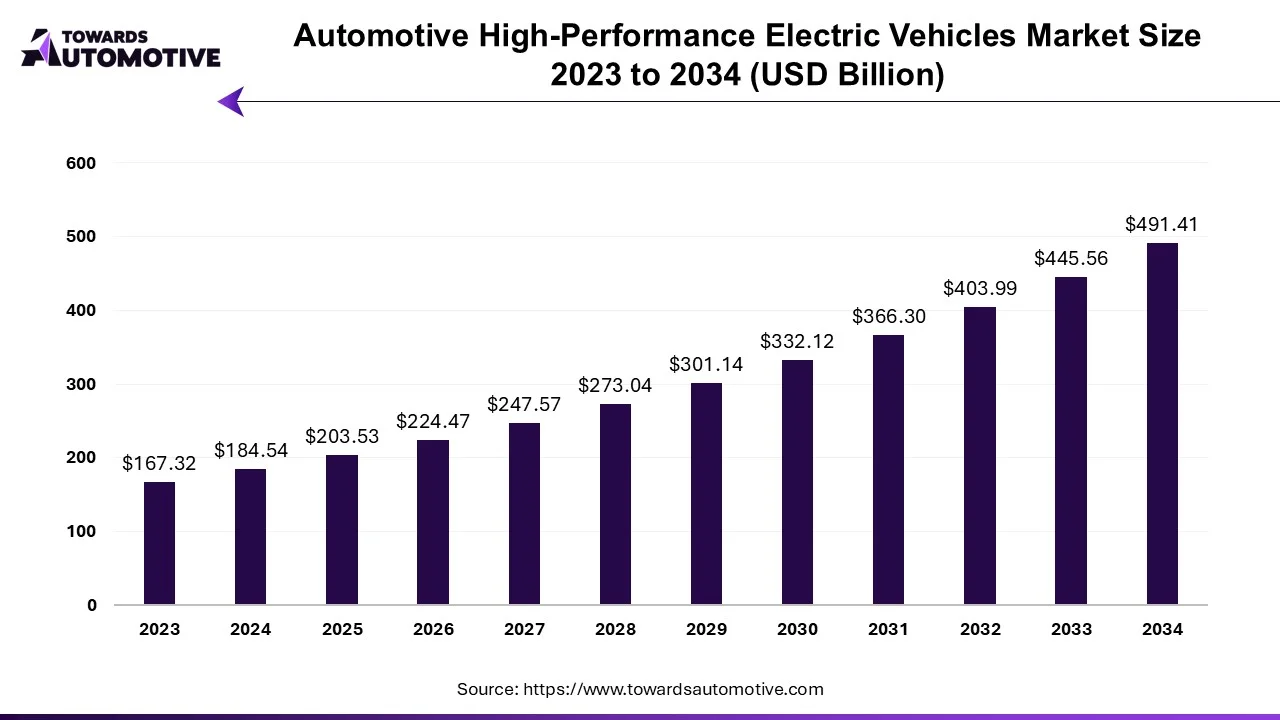
This section highlights the key business trends affecting the business electronics market analyzed by our researchers:
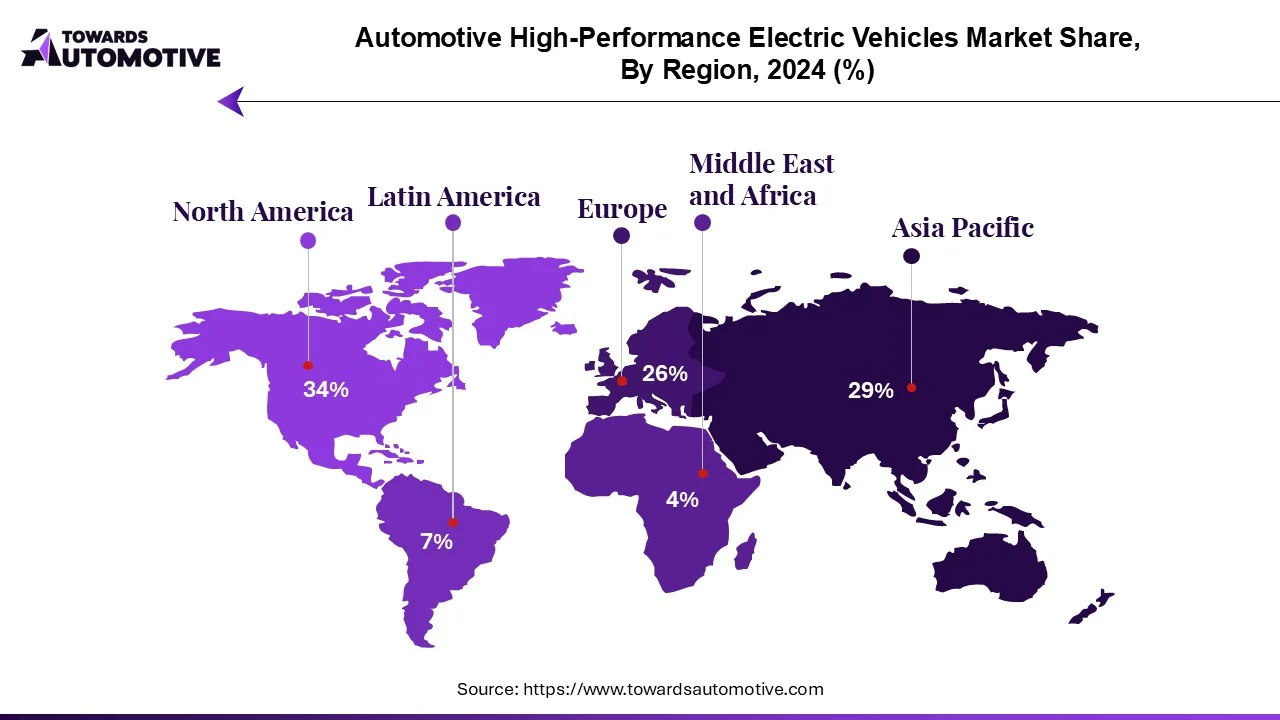
In the United States, the primary market for electric vehicles, significant changes are taking place in the number of vehicle electric vehicles. The presence of technology and electricity generation companies such as Tesla and General Motors and the participation of companies such as Nissan, Toyota, and BMW drives this change. Increasing consumer awareness about the environmental impact of internal combustion engines has also led to a steady increase in demand for electric vehicles in the country. The federal Internal Revenue Service (IRS) provides tax credits ranging from $2,500 to $7,500 for all new electric vehicles purchased in the United States.
The electric vehicle industry across the Asia-Pacific region has made significant progress in recent years. The country, known for its automobile production, is switching to electric vehicle production. Electric vehicles are becoming more popular as manufacturers focus on developing high-performance electric vehicles with advanced features, advanced driver assistance systems (ADAS), and improved highway capability compared to other electric vehicles.
China's Electrical Home Appliances Leader Electrical Home Appliances Electrical Home Appliances Electrical Home Appliances Electrical Home Appliances Electrical Home Appliances Electricity and the plan supported the development of the automobile industry, enabling the country to maintain its important position in the economy. In February 2021, private vehicle use increased from 20% two years ago to almost 70%. Electric car sales account for 60% of the city, with no restrictions on the growth of cars; This shows that China's electric car sales have the potential to grow further.
Many European governments have encouraged consumers to accept electricity through various activities. Cooperation between the government and the private sector focuses on battery electric vehicles and the promotion of environmentally friendly transport. Germany, home to major automobile manufacturers, leads the way in the use of electric vehicles in business and passenger transportation.
Automobile companies such as Daimler and Navista International. He often talks about the difficulty of replacing diesel engines with batteries. International organizations have forced the automotive industry and logistics companies to produce commercial vehicle batteries by following strict regulations and fuel industry standards.
For example,
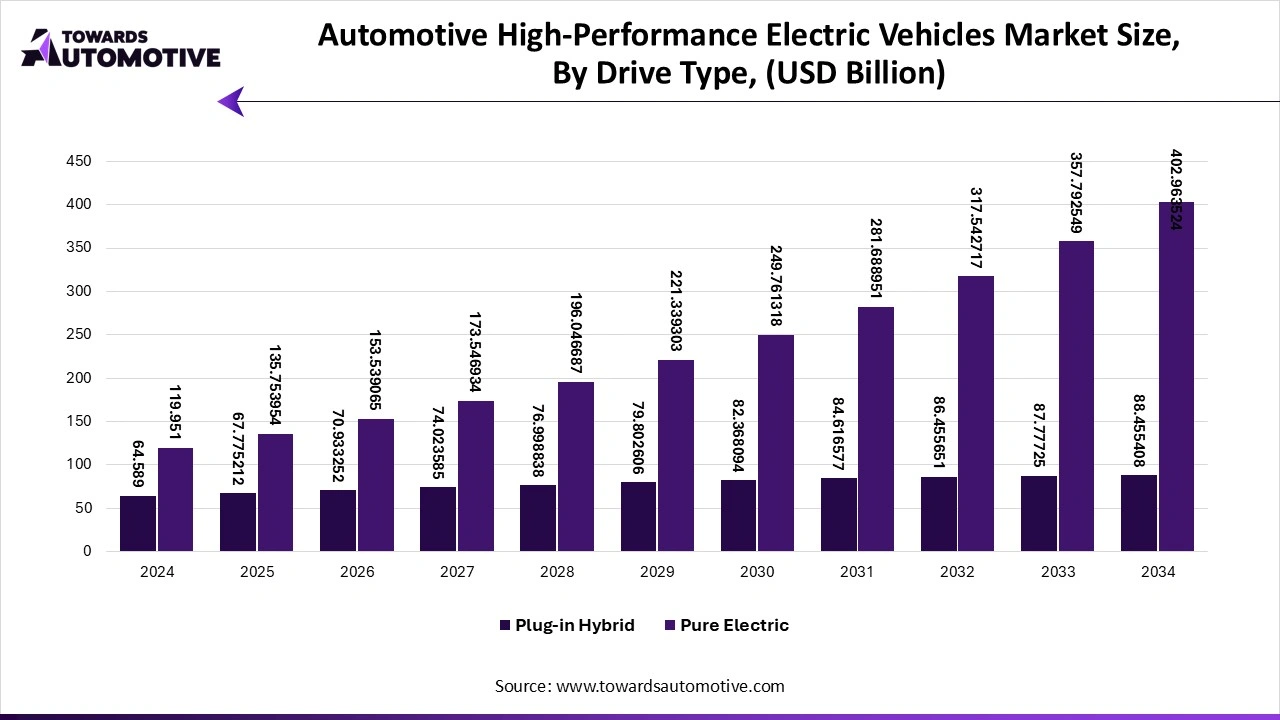
The electric vehicles market is forecast to grow from USD 2,072.80 billion in 2025 to USD 29,283.45 billion by 2034, driven by a CAGR of 34.21% from 2025 to 2034. The increasing demand for eco-friendly vehicles in developing nations along with technological advancements in the automotive sector is playing a vital role in shaping the industrial landscape. Additionally, numerous government initiatives aimed at developing the EV charging infrastructure coupled with rise in number of EV startups in developed regions has driven the market expansion. The research and development activities related to solid-state batteries is expected to create ample growth opportunities for the market players in the future.

The electric vehicles market is a prominent segment of the automotive industry. This industry deals in development and distribution of vehicles that are powered by batteries. There are several types of vehicles developed in this sector comprising of scooters, motorcycles, three-wheelers, passenger cars, buses, trucks, and some others. These vehicles are integrated with numerous components including battery pack & high voltage component, motor, brake, wheel & suspension, body & chassis, low voltage electronic components and some others. The end-users of these vehicles comprise of personal users and commercial users. This market is expected to rise significantly with the growth of the battery manufacturing sector around the globe.
The battery electric vehicles (BEVs) market is forecast to grow from USD 487.32 billion in 2025 to USD 1721.03 billion by 2034, driven by a CAGR of 15.05% from 2025 to 2034. The rising adoption of EVs in different parts of the world with an aim at reducing vehicular emission coupled with numerous incentives and benefits provided by automotive brands on purchasing BEVs has contributed to the industry in a positive direction.
Additionally, rapid investment by government for developing the EV charging infrastructure along with technological advancements in electric vehicle industry is playing a vital role in shaping the industrial landscape. The research activities related to development of cobalt-free batteries is expected to create ample growth opportunities for the market players in the future.
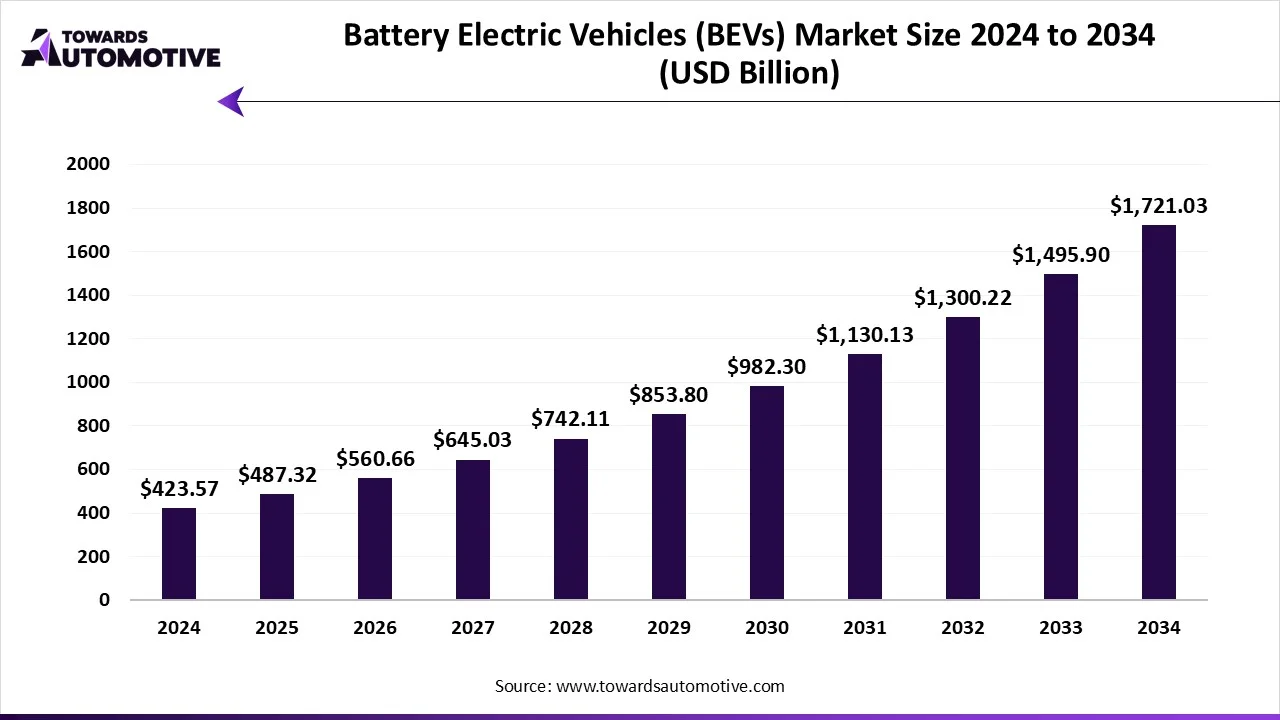
The battery electric vehicles (BEVs) market is a crucial segment of the automotive industry. This industry deals in production and distribution of battery electric vehicles around the world. There are several types of vehicles developed in this sector consisting of passenger cars, light commercial vehicles, heavy commercial vehicles, two-wheelers, three-wheelers, buses and some others. These vehicles are powered by different types of batteries comprising of lithium-ion batteries, solid-state batteries, nickel-metal hydride (NiMH) batteries, and some others. It consists of numerous components including battery pack, electric motor, power electronics, thermal management system, vehicle control unit (VCU), charging port and some others. The end-users of these vehicles comprise of personal users, commercial/ ride-hailing fleets, public transport, industrial/utility fleets and some others. This market is expected to rise significantly with the growth of the battery industry in different parts of the globe.
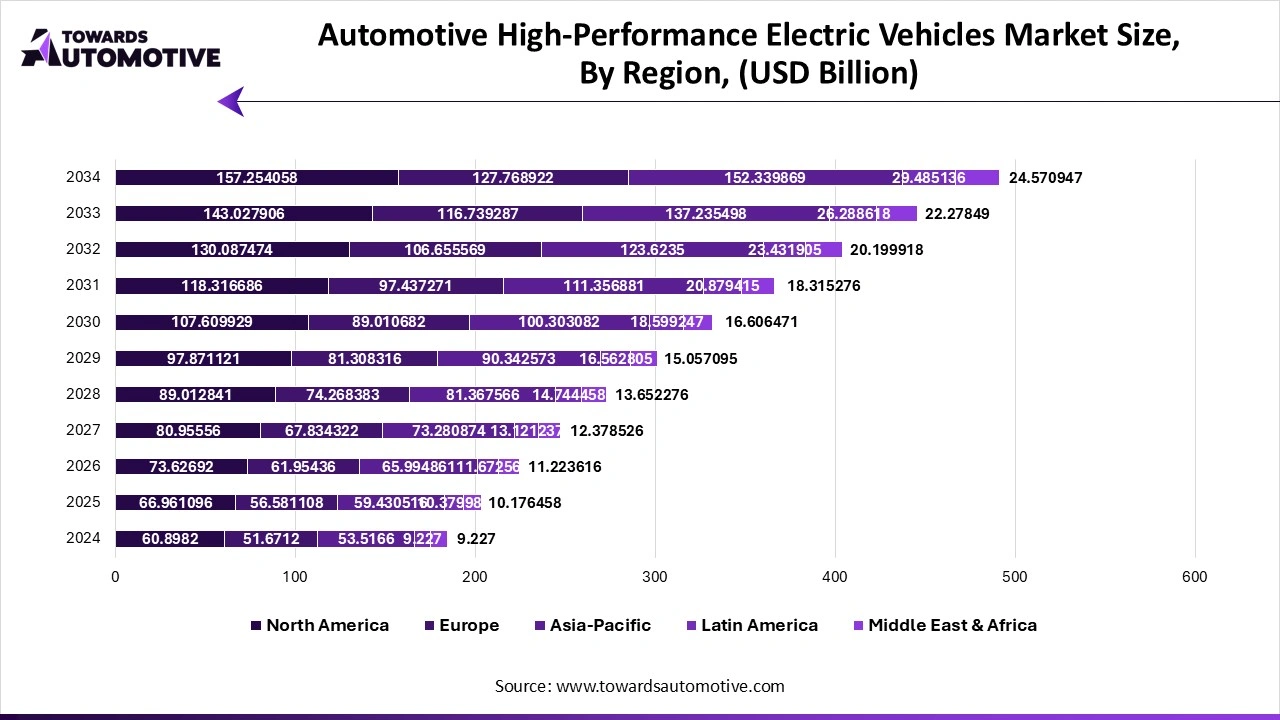
The North America electric vehicles market is set to grow from USD 35.39 billion in 2025 to USD 38.88 billion by 2034, with an expected CAGR of 1.05% over the forecast period from 2025 to 2034. The market is expanding at a CAGR of xx % between 2025 and 2034. The increasing demand for eco-friendly vehicles along with rise in number of EVs startups has driven the market expansion.
Additionally, numerous government initiatives aimed at developing the EV charging infrastructure coupled with rapid investment by market players for opening new EV manufacturing units is playing a crucial role in shaping the industrial landscape. The research and development activities related to sodium-ion batteries as well as technologies advancements in hybrid powertrains is expected to create ample growth opportunities for the market players in the upcoming years.
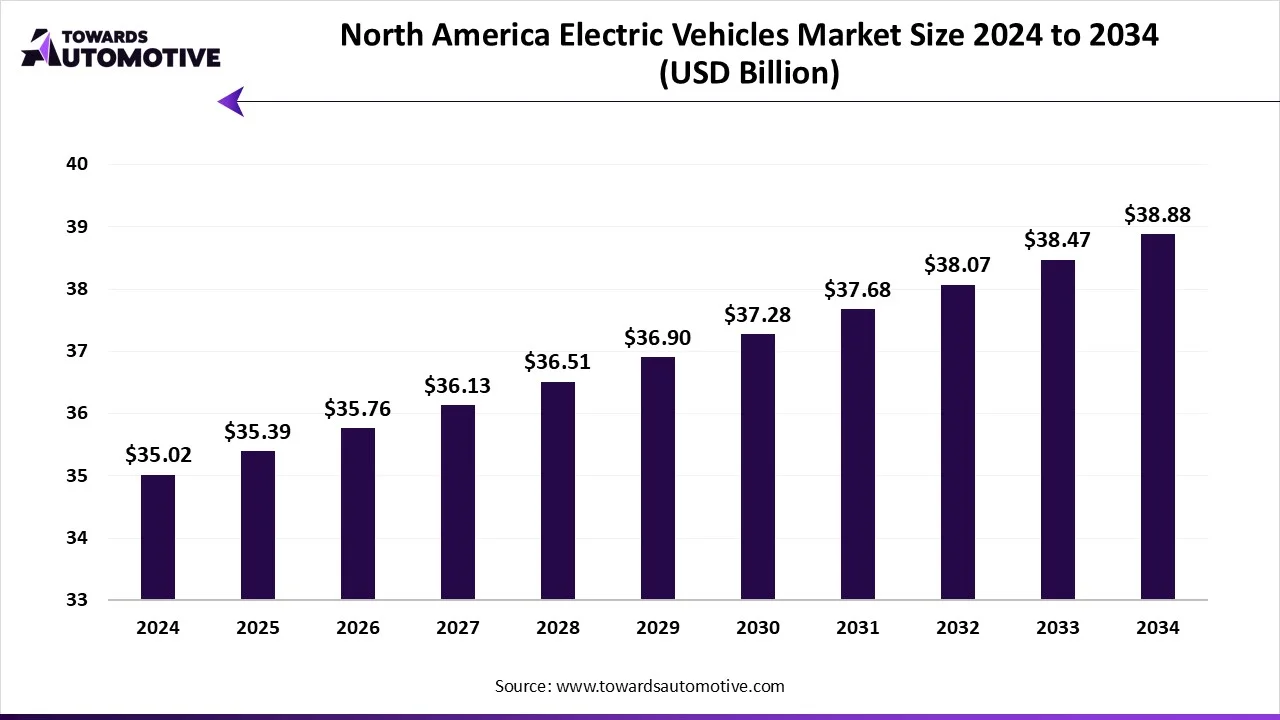
The North America electric vehicles market is a prominent sector of the automotive industry. This industry deals in manufacturing and distribution of electric vehicles for the consumers of North America. There are different types of vehicles developed in this sector comprising of passenger cars, light commercial vehicles (LCVs), heavy commercial vehicles (HCVs), buses & coaches and some others. These vehicles are powered by numerous types of batteries including lithium-ion batteries, nickel-metal hydride (NiMH) batteries, solid-state batteries and some others. It delivers various driving range such as up to 150 miles, 151-300 miles and above 300 miles. The end-users of these vehicles comprise of private users and commercial/fleet users. This market is expected to rise significantly with the growth of the battery manufacturing sector around the world.
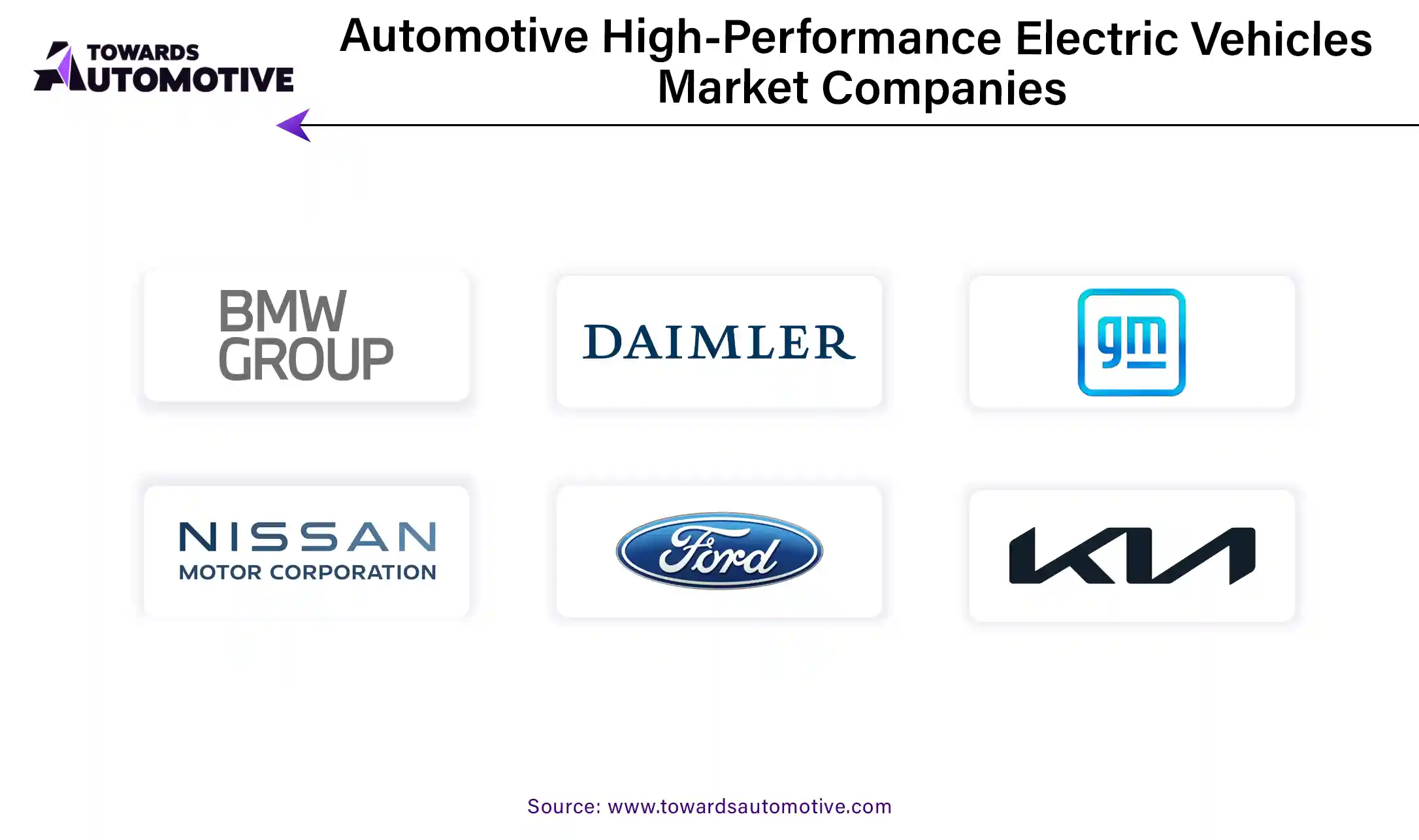
A High-Performance Electric Vehicle (EHPV) is an electric vehicle that can travel more than 150 miles on a single charge, accelerate to more than 90 miles per hour, and accelerate from 0 to 60 miles per hour in less time.
The high-performance electric vehicle market is segmented by drive type, including plug-in and battery-powered or fully electric vehicles, and by vehicle type, including passenger and commercial vehicles. The market is geographically segmented into North America, Europe, Asia Pacific, and the Rest of the World.
By Drive Type
By Vehicle Type
By Geography
October 2025
October 2025
October 2025
October 2025
We offer automotive expertise for market projections and customizable research, adaptable to diverse strategic approaches.
Contact Us